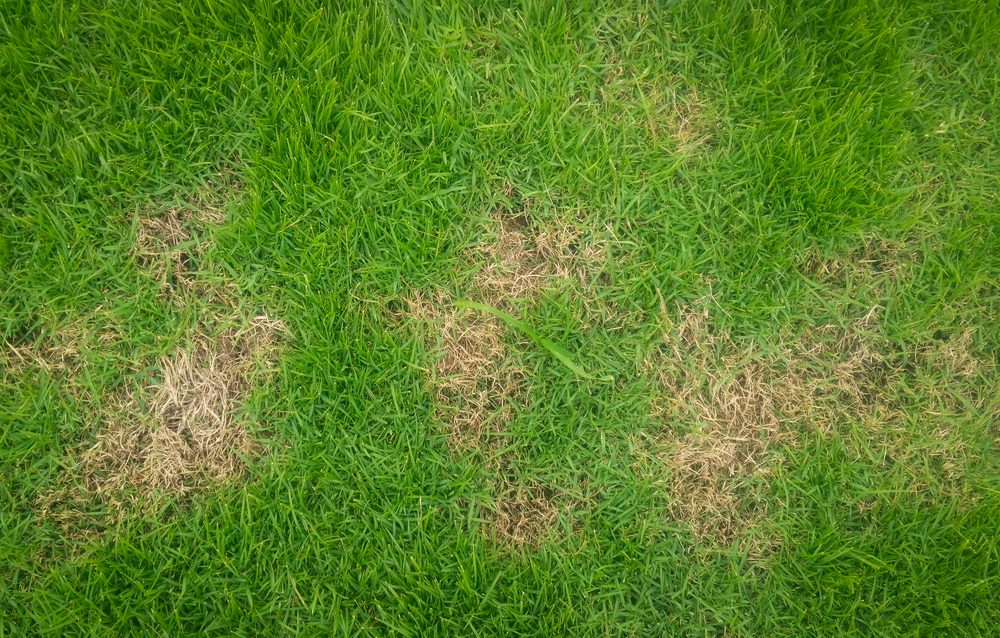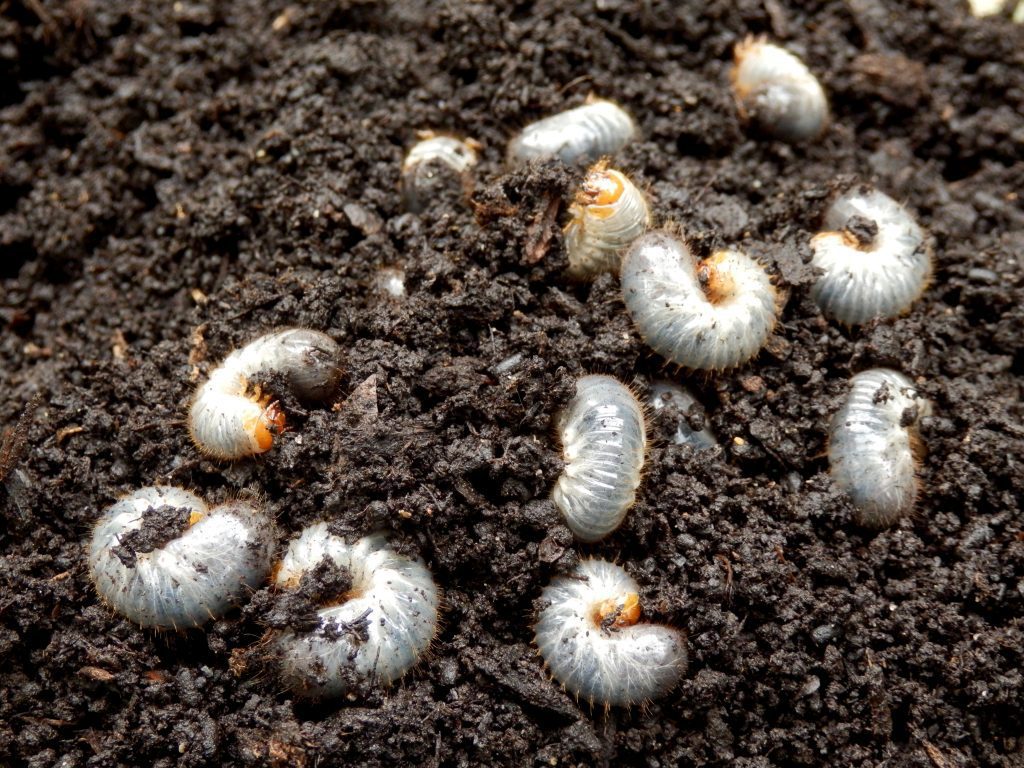Have you noticed that your lawn is plagued with brown spots and grass that just doesn’t seem to grow? Does this grass feel soft and spongy to walk on? Are you getting a few uninvited guests digging up your lawn, like raccoons, skunks, and birds? If you answered yes to any of these questions, your lawn may have grubs. To confirm that grubs are to blame, pull back the turf carefully and inspect it for grubs. Although grubs can be one of the hardest pests to deal with, don’t worry, you can control and get rid of them if you follow these suggestions.

So you have grubs, but what exactly are they?
As Sun Tzu said, “know thy enemy”, so before you start taking action to eliminate grubs from your lawn, you need to know what they are. Grubs are the white/yellow and c-shaped larvae of June Beetles, European chafers, and Japanese beetles. When they’re at their largest they are 2 to 4 cm long. Grubs destroy your lawn by feeding on the roots of your grass, which is why your lawn will begin to wilt or turn brown. Grubs prefer moist conditions, and since moisture levels in the soil are higher in the Spring and Fall, damage from grubs will be more severe at those times. This means you need to keep a careful eye on your lawn during these seasons.
How do I eliminate grubs from my turf?
Nematodes
Nematodes are microscopic sized worms that occur naturally in your lawn and defend your turf against various soil insects. They seek out grubs and eventually kill them by releasing a bacteria inside the grubs. Dormant nematodes, when applied to your lawn, need to be watered deeply to multiply and push them down to where the grubs are. You can find nematodes at retail stores, but they can be costly and you may not always achieve the results that you want. This could be due to various weather conditions and other environmental factors that decrease the effectiveness of this option.

Leave it
When we see something affecting our lawn’s health, our immediate reaction is to eliminate the threat, but with grubs it’s not necessary to react right away. Your need to take action against grubs is dependent on how many grubs there are in one square foot of turf, and how your lawn is affected. When you pull back your turf, count how many grubs you see. If you have less than five in your grass, you do not need to act at all unless you have pests like skunks and raccoons digging up your lawn. If you have more than ten, you have a moderate grub problem and should take action.

Motion Sensors & Other At-Home Options
If you’re finding uninvited guest tearing up your lawn in search of grubs, try adding motion sensor lights. Pests, like raccoons and skunks, can damage your lawn further and sometimes worse than the grubs themselves. Adding motion sensor lights, will scare and keep away raccoons and skunks who prefer when it’s dark to do their digging. This is a humane and safe way to make sure they keep off your lawn. If that isn’t scaring them away, you can also try home remedies such as spreading cayenne pepper or moth balls around the affected areas.
Your first defence against grubs is a healthy lawn, so contact us today at 1.888.791.8873 to ensure that your turf is safe from grubs and other uninvited guests. If you still have questions about pests that could be affecting your turf visit our FAQ page or our blog post on What Pest is “Bugging” Your Lawn.
